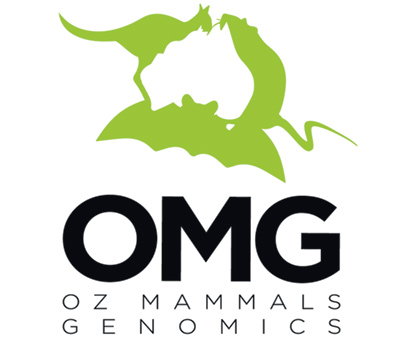Brush-tailed rock-wallaby genome
Rock-wallabies (Petrogale), members of the family Macropodidae, have experienced extensive chromosomal rearrangement between, and occasionally within, a species. In particular, the genus Petrogale shows extensive chromosome reshuffling, making it an ideal model group for studying chromosomal speciation (Eldridge and Close 1993).
The brush-tailed rock-wallaby (Petrogale penicillata) is being sequenced because it is a threatened species and the genome assembly will therefore assist with conservation genomics projects on this and other related species by enabling signatures of selection and local adaptation as well as genes involved in phenotypic traits to be identified within the genome. With a karyotype more similar to that of the ancestral macropod, the brush-tailed rock-wallaby also acts as an outgroup for comparison to the genomes of the more rearranged chromosomes of a subset of rock-wallaby species from far north Queensland that we are studying to determine the role chromosome rearrangement play in the speciation (Potter et al. 2017).
Project coordinator:
- Janine Deakin (University of Canberra)
Project collaborators:
- Jason Bragg (Royal Botanic Garden Sydney)
- Richard Edwards (University of New South Wales)
- Mark Eldridge (Australian Museum)
- Sally Potter (Australian National University)
References cited:
- Eldridge, M. D. B., and Close, R. L. (1993). Radiation of chromosome shuffles. Current Opinion in Genetics and Development 3, 915–922.
- Potter, S., Bragg, J. G., Blom, M. P., Deakin, J. E., Kirkpatrick, M., Eldridge, M. D., and Moritz, C. (2017). Chromosomal speciation in the genomics era: disentangling phylogenetic evolution of rock-wallabies. Frontiers in Genetics 8, 1–18
